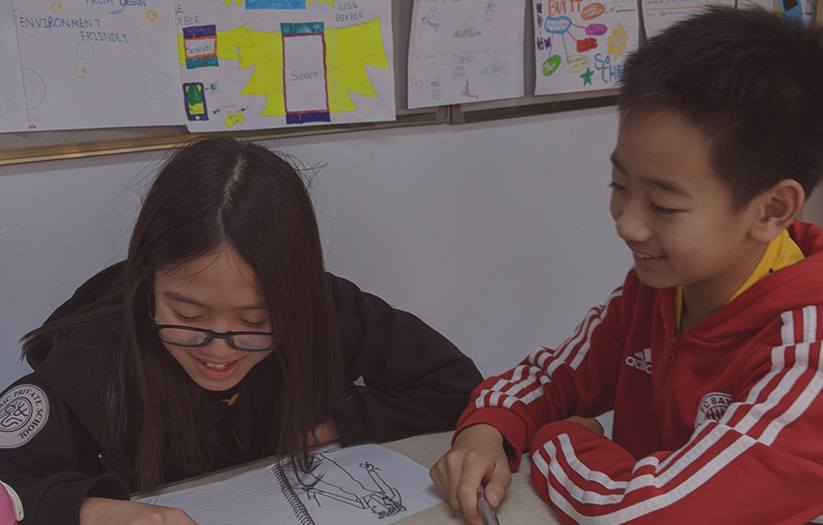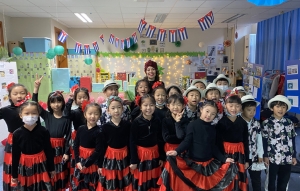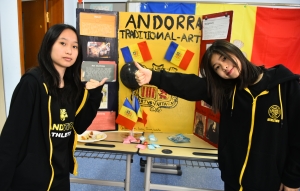Academics
English Curriculum
The ELA Program at SMIC Beijing uses the Aero, or Common Core Plus, Standards. We practice competitive grouping, meaning that we have two levels of ELA classes per grade:
A level for Accelerated Students is meant to propel those students who are able to study advanced material at an accelerated pace in order to prepare them for AP courses at the high school level. Placement in these courses is determined based on a student’s ability to perform above the regular course average, demonstrate positive and eager learning attitudes, uphold academic honor, and demonstrate strong interest in the subject area.
B level for At Level Students is intended to enhance students’ ability to effectively communicate by guiding them through basic language skills, such as grammar, vocabulary, reading comprehension, writing, listening and speaking. At the end of this course, students should be transitioning into critical readers, logical thinkers, organized writers and active participants in all areas of academic English.

Middle School Curriculum


Grade 6
Literature
-Focus placed on characteristics of
basic genres (historical fiction, fantasy, realistic fiction, science
fiction, etc), character analysis, identifying conflict and theme,
recognizing symbolism and foreshadowing.
-Students will be able to identify end rhyme, rhyme scheme, alliteration and various types of figurative language.
-Focus placed on identifying the central idea, text structure, and key claims of informational texts.
-Students
will be able to analyze an author’s techniques and how they effect the
text as a whole, as well as provide evidence to support their analysis.
Composition
-Focus is placed on basic grammar,
identifying parts of speech, using correct verb tenses, and expanding
adjective and adverb use to become more precise and descriptive.
-Students
will learn to introduce claims and organize their reasons and evidence
clearly, as well as develop their topic with relevant facts,
definitions, concrete details, quotations, or
other information and
examples.
-Focus is placed on using appropriate transitions to clarify the relationships among ideas and concepts.
-Students
will be able to conduct short research projects drawing on several
sources and refocusing the inquiry when appropriate.
Grade 7
Literature
-Students will build upon their
understanding of genres and basic literary elements. Comparing and
contrasting genres, differentiating between different types of conflicts
and different types of characters.
-Focus is placed on making
connections between literary elements and using multiple pieces of
evidence to support the student’s analysis. i.e. the author portrays
this character in a certain way in order to better support the novel’s
theme.
-In poetry, students will begin to identify different forms
and analyze author’s word choice recognizing techniques such as using
allusions and extended metaphors.
-Students will be able to read
various informational texts over the same topic, comparing and
contrasting the author’s purpose and presenting a summary free of bias.
Composition
-Focus is placed on supporting claims with logical reasoning and relevant evidence, using accurate, credible sources.
-Students will be able to introduce a topic in a variety of ways, capturing the audience’s attention.
-Focus
is placed on using narrative techniques, such as dialogue, pacing, and
description, to develop experiences, events, and/or characters.
-Students
will be able to shape their writing and redirect writing focusing on
how well purpose
and audience have been addressed.
Grade 8
Literature
-Students will begin to analyze how a
theme develops over the course of a text, including its relationship to
the characters, setting, and plot, as well as choose the evidence that
most strongly supports their analysis.
-Focus is placed on determining the impact of specific incidents, dialogue, or word choice on the work as a whole.
-Students
will compare and contrast the structure of two or more texts and
analyze how the differing structure of each text contributes to its
meaning and style.
-Students will analyze how an informational text
makes connections among and distinctions between individuals, ideas, or
events (e.g., through comparisons, analogies, or categories).
Composition
-Focus is placed on distinguishing their own claims from alternate or opposing claims and identifying logical fallacies.
-Students
will be able to organize ideas, concepts, and information into broader
categories; as well as include formatting (e.g., headings), graphics,
and multimedia when useful to aiding comprehension.
-Focus is placed
on using a variety of transition words, phrases, and clauses to convey
sequence, signal shifts from one time frame or setting to another, and
show the relationships among experiences and events.
-Students will
be able to conduct research projects to answer a question drawing on
several sources and generating additional related, focused questions
that allow for multiple avenues of exploration.





